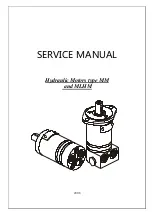
50
Electrical System
KohlerEngines.com
22 690 01 Rev. --
Test for Spark
NOTE: To maintain engine speeds normally obtained during cranking, do not remove engine spark plug.
1. Make sure spark plug lead is connected to spark plug.
2. Check condition of spark plug. Make sure gap is set to 0.76 mm (0.030 in.). If plug is in good condition, check/
adjust gap and reinstall.
3. a. Test for spark with ignition tester. Disconnect spark plug lead and connect it to post terminal of tester. Connect
clip to a good ground, not spark plug.
b. Make sure engine ignition switch, kill switch, or key switch is in RUN position.
4. Crank engine (minimum speed 500 RPM), and observe tester. Visible and audible sparks should be produced.
Condition
Possible Cause
Conclusion
Audible and visible sparks are
produced.
Ignition Module
Ignition module is OK.
Audible and visible sparks are not
produced.
Ignition Module or Electrical System
Make sure engine ignition switch,
kill switch, or key switch is in RUN
position.
Check wires and terminals of ignition
module and other components for
accidental grounding and damaged
insulation.
If wires and terminals are OK, ignition
module is probably faulty and should
be replaced. Test module further
using an ohmmeter.
Test Ignition Module with Ohmmeter
NOTE: This test cannot be performed unless module has been fi red at least once.
Measure resistance of module secondary using an ohmmeter.
1. Zero ohmmeter.
2. Connect one ohmmeter lead to laminations. Connect other lead to spark plug terminal of high-tension lead.
3. With ohmmeter leads connected in this manner, resistance of secondary should be 8,200 to 23,000 ohms. Refer
to Disassembly and Reassembly for complete ignition module removal and installation procedures.
Condition
Possible Cause
Conclusion
Resistance is within specifi ed range.
Module Secondary
Module secondary is OK.
Resistance is low or 0 ohms.
Module secondary is shorted.
Replace module.
Resistance is high or infi nity ohms.
Module secondary is open. Replace
module.
















































